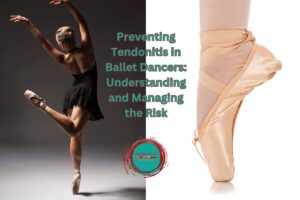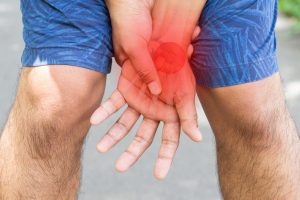
October 20th marks World Osteoporosis Day, a global event dedicated to raising awareness about bone health and fracture prevention. This year, the International Osteoporosis Foundation (IOF) continues its mission to spread the word and encourage people to prioritise bone health. This article delves into the significance of World Osteoporosis Day, explores the latest research on bone health and fractures, and provides actionable steps to ensure a fracture-free future.
Why Read This Article?
Osteoporosis is a disease of the bone leading to a loss of bone mass which causes them to become weak and fragile. As a result, a small trip or fall can fracture the bone.
As we age, our bone health becomes increasingly vital. Understanding the risk factors, prevention strategies, and treatment options for osteoporosis and fractures can significantly impact our quality of life. World Osteoporosis Day is an annual opportunity to focus on this critical aspect of our health. In this article, we will:
- Highlight the Importance of World Osteoporosis Day: Learn why this day is observed annually and its connection to bone health.
- Explore Osteoporosis and Metabolic Bone Disease: Understand the basics of osteoporosis, its risk factors, and its impact on the musculoskeletal system.
- Raise Awareness: Learn how to spread the word and make a difference in your community.
- Prioritise Bone Health: Gain practical insights into maintaining strong bones and preventing fractures.
- Unveil the Toolkit: Explore resources provided by the International Osteoporosis Foundation to help you take action.
- Connect with Others: Understand the importance of community and how it can improve your own bone health.
- Take Action: Receive actionable tips on exercises, health education, and lifestyle changes to improve your bone health.
- Embrace a Fracture-Free Future: Discover the ultimate goal of the campaign and how you can contribute to achieving it.
- Stay Informed: Find out about key events and initiatives related to World Osteoporosis Day 2023.
By the end of this article, you will have a comprehensive understanding of the significance of bone health, how to take proactive steps, and the impact you can make in spreading awareness. Let’s embark on this journey toward stronger, healthier bones.
1. The Importance of World Osteoporosis Day
World Osteoporosis Day is observed annually on October 20th. It serves as a reminder of the global health challenge posed by osteoporosis, a disease characterised by weakened bones that are more prone to fractures. This day was launched by the International Osteoporosis Foundation (IOF) to raise awareness of osteoporosis and metabolic bone disease.
The goal of World Osteoporosis Day is to:
-Increase awareness of osteoporosis and its risk factors.
-Promote the prevention, diagnosis, and treatment of osteoporosis.
-Spread the word about the importance of bone health.
-Encourage people to take action to protect their bones.
The IOF, in collaboration with national osteoporosis societies worldwide, organizes events, campaigns, and educational programs to achieve these goals. This year, the campaign focuses on improving bone health through prevention and early diagnosis.
2. Osteoporosis and Metabolic Bone Disease
What is Osteoporosis?
Osteoporosis is a bone disease characterised by low bone density and deterioration of bone tissue. It can lead to fragile bones, which are more susceptible to fractures, especially in the hip, spine, and wrist. Osteoporosis usually develops slowly and doesn’t show symptoms. It is often only diagnosed after a fracture happens from a minor fall or bump.
Osteoporosis vs Osteopenia
Bone health sits on a cuntimuum. With normal healthly bone at one end, and low density severely osteoporotic bone at the other end. In the middle is osteopenia. The key to better outcome sis identifying osteopenia as with treatment bone health can be improved back to normal. However once someone is osteoporotic it then becomes about maintenance and prevention of worsening.

Risk Factors for Osteoporosis
There are several factors that contribute to an increased risk of developing osteoporosis. While there are certain factors that are beyond our control, there are also factors that we can take action on in order to lower the risk of this disease.
The non-modifiable risk factors include:
Our genetics
There is a strong link between osteoporosis and our genetics. If your parents or grandparents had it, your chances of also having it are much higher.
Medications
Some medications increase our risk, the most common is taking steroids over a long period of time.
Menopause
- The changes in women’s hormones during and after menopause lead to an increase in the reabsorption of bone and a reduction in the amount of new bone being laid down.
- As a result, women who have undergone the menopause are at higher risk of developing osteoporosis and having subsequent osteoporotic fractures.
Past medical history
- Having other conditions such as Rheumatoid Arthritis, over-active thyroidism, diabetes, Celiac or Crohn’s Disease also increase the risk.
A history of eating disorders
- Eating disorders, particularly in adolescence, can lead to a reduction in bone bass and therefore increase our risk as we get older.
The modifiable risk factors are the ones you can make changes to and include:
Exercise
- Increasing your physical activity levels with a particular emphasis on weight bearing and strengthening exercises is a great way to stimulate bone health.
- Current guidelines recommend 30-40 minutes of exercise, three to four times each week with some weight-bearing and resistance exercises included.
Ideas for weight-bearing exercises include:






Find out more about how our expert physiotherapist can help you with the management of your osteoporosis through our osteoporosis service page.
Calcium, Vitamin D and Protein
It is important we take on enough of these within our diet to optimise bone health. See The World Osteoporosis Day Booklet for more information on how to ensure you have the right diet to protect your bones.
Smoking
- Smoking or a history of smoking doubles the risk of osteoporosis. Smoking cessation is a fantastic way to improve the quality of your bone.
Alcohol
- Excessive alcohol, particularly in adolescence and early life, can have a negative impact on your bone quality. Modifying your alcohol is another way to help optimise your bone health.
The Musculoskeletal Impact
Osteoporosis not only leads to fractures but also affects overall musculoskeletal health. The weakening of bones can result in decreased mobility, balance, and posture. It’s crucial to address bone health to maintain an active lifestyle as you age. At Central Health Physiotherapy we can give you specialist advice around activity levels, fall prevention and work with you to design a specific programme that suits you as an individual.
3. Raise Awareness
Spreading the Word
Raising awareness about osteoporosis and bone health is a crucial step in preventing the disease. Like us, you can help by spreading the word within your community and on social media. If you found this article useful then please plass it on! Using hashtags related to World Osteoporosis Day and sharing informative posts like this can reach a broader audience and encourage discussions about bone health.
The IOF Toolkit
To make your awareness efforts more effective, the International Osteoporosis Foundation offers a toolkit filled with resources, educational materials, and campaign materials. This toolkit provides valuable information to help you raise awareness and encourage people to take action.
5. Prioritize Bone Health
Take Action Now
Maintaining strong bones should be a lifelong commitment. Here are some actionable steps you can take to prioritize your bone health:
– Engage in regular weight-bearing exercises to strengthen bones.
– Ensure a balanced diet rich in calcium and vitamin D.
– Educate yourself about the risk factors for osteoporosis and metabolic bone disease.
– Connect with others in your community who share your commitment to healthy bones.
– Improve your balance and posture through exercises and activities.
– Adopt a bone-healthy lifestyle, which includes regular exercise, a balanced diet, and avoiding smoking and excessive alcohol consumption.
6. Assessing Your Risk Of Osteoporosis
Resources to Help You
If you would like to get an idea about your risk factors for osteoporosis you can take the one-minute risk factor test. If you have moderate to high risk factors, talk to your GP about arranging a bone health assessment which will include blood tests and a DEXA scan (a special type of x-ray which assess the bone density of particular bones.)
In some cases, medical treatment is required under the specialist guidance of a Rheumatologist. These specialist doctors can prescribe medications that help to block the cells in your body that absorb bone or prescribe other medications that stimulate bone growth.
The most common place for osteoporotic fractures are the wrist, shoulder, spine and hip. These fractures can all have devastating, long-term effects on a person’s life and are best managed by preventing them in the first place.
Access the ‘build better bones’ resources. to help you start to explore what help is available to you.
7. Connect with Others
Joining a Community
Connecting with others who are on the same journey as you, looking for help to improve their bone health can be incredibly motivating. Join local groups, attend community events, and engage in discussions about bone health. By building a community, you can learn from others and provide support to those looking to improve their bone health. Here you can find your national society for osteoporosis. Sroll down to the world map to find your local osteoporosis support.
8. Take Action
Practical Steps
Taking action for better bone health involves more than just awareness; it requires making practical changes in your daily life. Here are some steps you can take:
– Engage in regular weight-bearing exercises, such as walking, jogging, or dancing.
– Ensure your diet includes sufficient calcium and vitamin D.
– Educate yourself and others about the risk factors for osteoporosis.
– Focus on improving balance and posture.
– Adopt a bone-healthy lifestyle by avoiding smoking and excessive alcohol consumption.
9. Embrace a Fracture-Free Future
The Ultimate Goal
The long-term goal of World Osteoporosis Day is to create a fracture-free future for all. By raising awareness, promoting prevention, and improving diagnosis and treatment, we can work towards reducing the number of fragility fractures. Enhancing the quality of life for individuals like yourself will not only alleviate the burden on healthcare systems, but also bring about numerous benefits.
10. Stay Informed
Upcoming Events and Initiatives
To stay informed about the latest developments and events related to World Osteoporosis Day, be sure to follow the International Osteoporosis Foundation’s updates. Keep an eye out for campaigns, webinars, and opportunities to get involved in promoting bone health in your community.
In Summary
- – World Osteoporosis Day is a global event observed annually on October 20th to raise awareness about bone health and fracture prevention.
- – Osteoporosis is a bone disease characterized by low bone density and an increased risk of fractures.
- – Risk factors for osteoporosis include aging, menopause, a sedentary lifestyle, low BMI, and family history.
- – Osteoporosis affects musculoskeletal health, leading to mobility issues and decreased balance.
- – Translational studies play a crucial role in advancing our understanding of bone health and treatment options.
- – Raising awareness about osteoporosis is essential, and the IOF offers a toolkit to aid in this effort.
- – Prioritising bone health involves regular exercise, a balanced diet, education, and community involvement.
- – Building a community of like-minded individuals can provide support and motivation for maintaining bone health.
- – Taking practical steps, such as exercise and a healthy lifestyle, is key to preventing osteoporosis.
- – The ultimate goal of World Osteoporosis Day is to create a fracture-free future through awareness, prevention, and improved treatment.
- – Stay informed about upcoming events and initiatives related to World Osteoporosis Day to make a positive impact on bone health in your community.
By prioritizing bone health and spreading awareness, we can all contribute to a world where fractures are less common, and people of all ages can enjoy a life free from the burden of osteoporosis. So, mark your calendar for October 20th and take action for better bone health. Together, we can make a difference.
If you have had an osteoporotic fracture, in addition to medical management, you will benefit hugely from a specific exercise programme to help strengthen the muscles around the fracture site as well as a functional programme to return you to your pre-fracture lifestyle. Check out our osteoporosis service page for more information on how we can help.
If you have any questions or concerns, please contact your GP or any of our Expert Musculoskeletal Physiotherapists at our Chancery Lane, St Johns Wood, Kensington or Chelsea clinics and they would be happy to assist you.
For more information visit the International Osteoporosis Foundation or The World Osteoporosis Day websites.




Comments